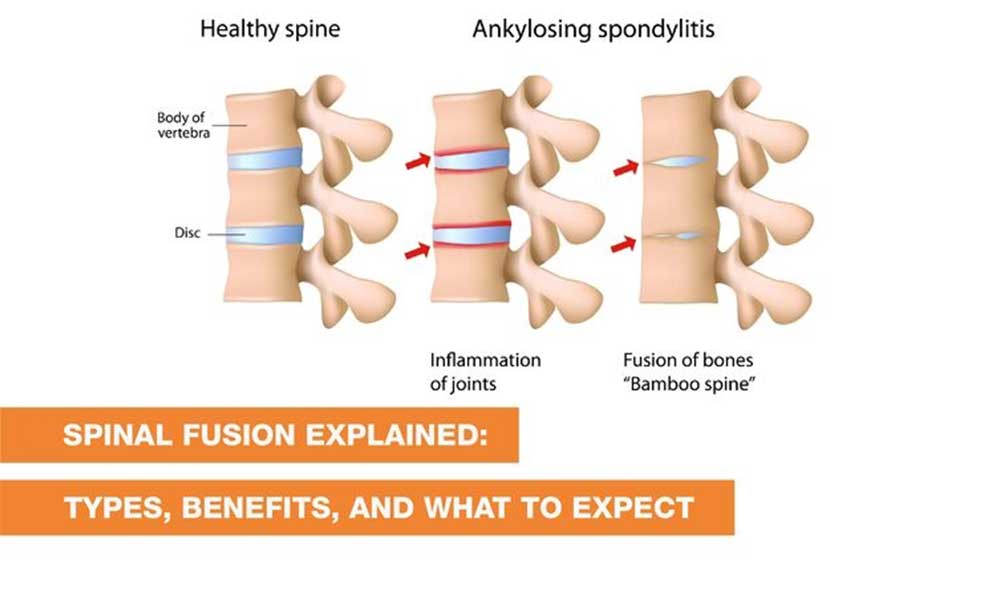Request Appointment
Enter your details and we will be in touch with you shortly;
Or call
8655885566
between 8 am and 8 pm.


Back pain can significantly impact daily life, making even simple movements challenging. For individuals dealing with chronic spinal conditions, spinal fusion can be a solution. This surgical procedure aims to stabilize the spine by permanently joining two or more vertebrae. It is commonly performed to relieve pain, correct spinal deformities, or address instability caused by injuries, degenerative conditions, or diseases affecting the spine.
What is spinal fusion? It is a surgical procedure that eliminates motion between vertebrae by fusing them. This process reduces pain and enhances spinal stability. The procedure is often recommended for conditions like degenerative disc disease, scoliosis, fractures, or spinal stenosis.
During the surgery, a bone graft or artificial material is placed between the affected vertebrae. Over time, the bones grow together, forming a solid structure. Metal plates, rods, or screws may also be used to provide additional support during healing.
There are different types of spinal fusion, each tailored to address specific spinal conditions. It is rather based on the placement of the involved vertebra and the specific cause of the pain or the disparity instability.
It is a technique of accessing the spine through the abdomen but from the front part of the human body. It is commonly used for lumbar and cervical fusion surgeries. Anterior spinal fusion is often recommended for patients with degenerative disc disease.
In this method of spine surgery, the spinal column is approached from the back of the patient by the surgeon, instead of only reaching the skin directly. Posterior spinal fusion is widely used for correcting spinal deformities and stabilizing the spine after injury.
In this case, the approach to the spine is lateral. Lateral spinal fusion is less invasive than other methods and is commonly used to treat lower back conditions.
Some advanced techniques fall under types of spinal fusion, including:
The primary reason for undergoing spinal fusion is to relieve pain caused by abnormal motion of the spine. This procedure is used for:
Healing after spinal fusion surgery takes time, and patients must follow a strict recovery plan.
Patients typically stay in the hospital for a few days post-surgery. In this stage, it may be helpful to focus on how to ease the pain of the client, as well as help him/her with movements.
Full recovery may take a few months of your treatment program. Bone fusion is thus progressive and needs physical therapy and rehabilitation to be carried out.
Physical therapy includes:
Like any surgery, spinal fusion has benefits and risks.
Not all back pain cases require spinal fusion surgery. It is thus recommended to get a professional who will advise on the kind of treatment to make. Thus treatment methods such as physiotherapy, medication, and changes in personal life manner should be initiated before undergoing surgery.
For patients having a long-term backache issue which they would wish not to undergo surgery, Qi Spine Clinic’s treatments are unique to specifically help the patient without operation. Agnico’sspecializedd staff means that they determine the cause of pain and develop a long-term treatment program. To get to know how to live without pain, call and schedule your consultation right now.
Spinal fusion is a significant procedure designed to alleviate chronic back pain and spinal instability. With various types of spinal fusion available, the right approach depends on the patient’s condition. While the spinal fusion recovery process can be lengthy, it offers lasting relief for many individuals. Qi Spine offers an effective treatment that will help to restore movement and reduce pain. In case you have started having back problems, don’t let it consume your entire life, start the healing process now!
Visit our nearest clinic for your first consultation
Lumbar laminectomy is accompanied by moderate pain after surgery and can enhance the severity if not effectively managed by a physician. Patients undergoing treatments for their injuries normally note that their pains diminish over time as the affected part heals.
Spiral fusion is a process that finds the spine’s stability and helps many patients to return to a normal lifestyle. Thus, with effective recovery and rehabilitation, most patients get to achieve preserved or enhanced quality of life.
The severity ranges depending on the technique, that is, different types of spinal fusions pose different consequences and yields. Although it is a serious operation, the progress has minimized the risk factors, and many patients experience a significant improvement.
Rehabilitation differs from one person to another and in most cases it can take several months before one returns to his or her normal activities. Some of the initial enhancements may be noticed with guided rehabilitation and other activities mentioned in post-operative care.
It is not prohibited if the person is not qualified due to age but outcome depends on health and risk level in general. Despite the increase in cases of complications in the elderly, most elderly patients are capable of experiencing spinal surgery especially when careful assessment is done on them and individual anticoagulant management is instituted.